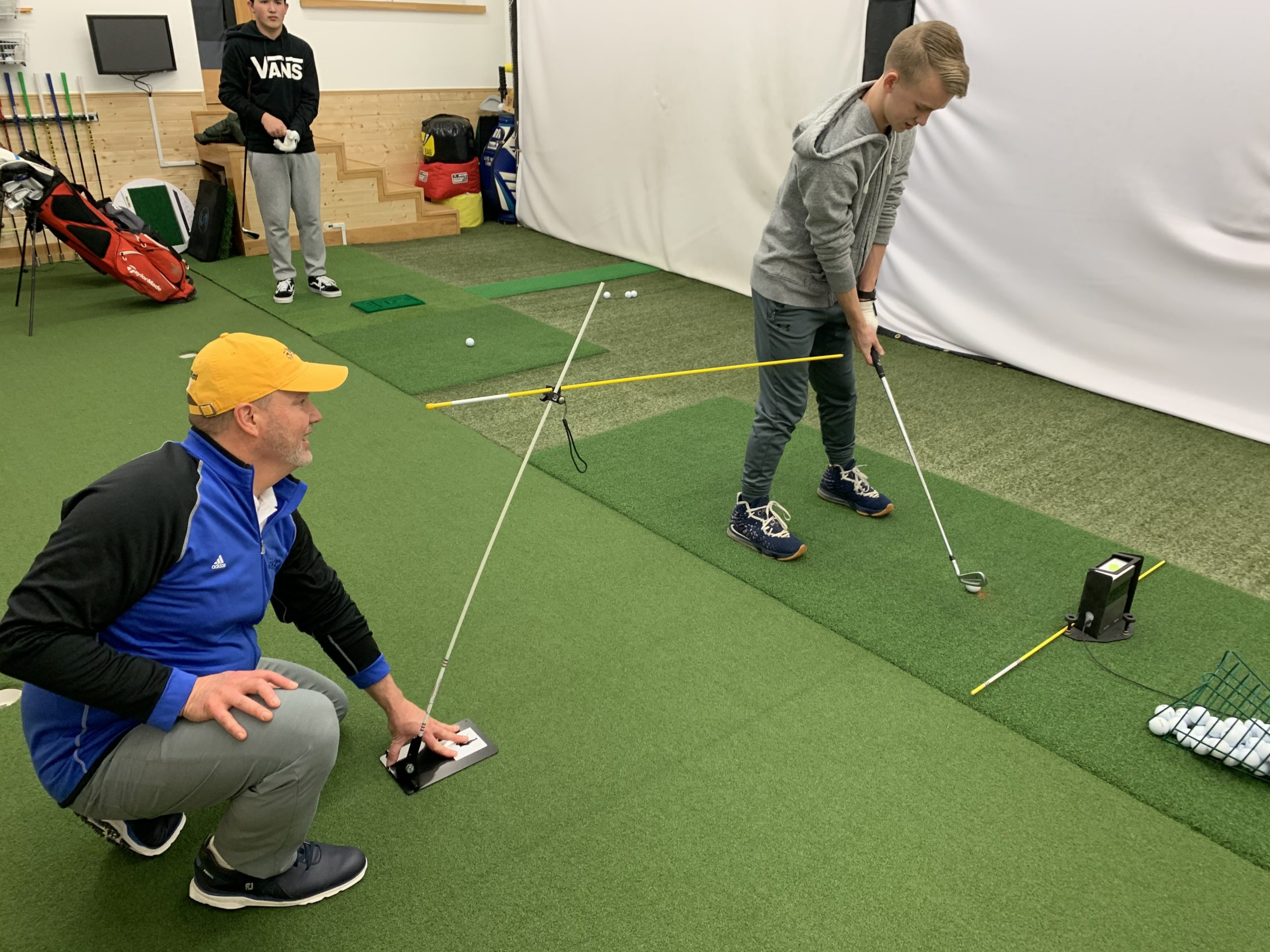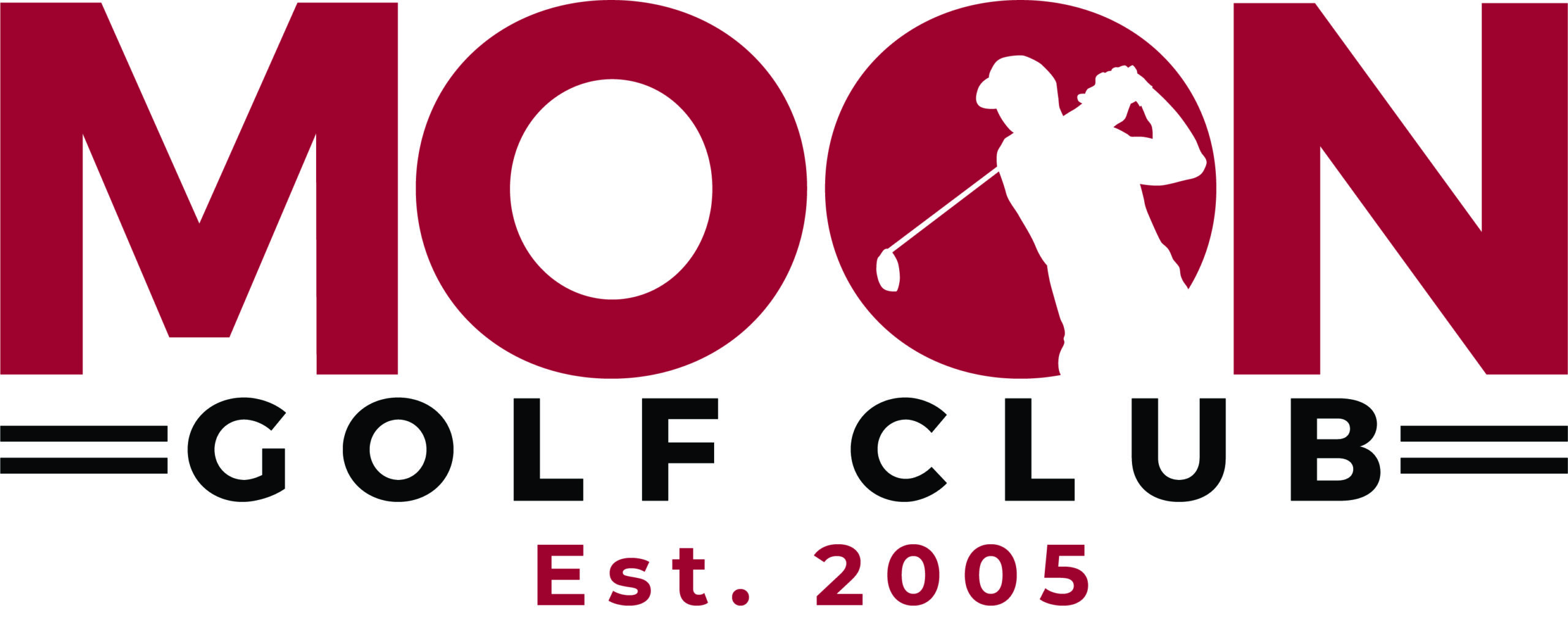PGN Features
PGN Feature: Kuhn Golf Academy Mixes Modern with Old-School

McMURRAY, Pa. — When I paid a visit to the Kuhn Golf Academy‘s home base during winter’s last blast, I expected to be dazzled by the modern teaching tools at the proprietor’s disposal.
To be fair, I certainly was.
In addition to the ballistics technology that’s become ingrained as part of the game, allowing instructors to deliver immediate, actionable data on ball speed, launch angle, club path and the like, David Kuhn has invested in all manner of training aids to help his students better transfer the principles taught into practical application.
“Our mission is to help players play better golf,” Kuhn told me matter-of-factly after I sat in for an afternoon at his swing lab. “To that end, we’re committed to providing all of the tools to help any level of player develop their game.”
A little taste of @CoachKuhnGolf at work with a young student … nothing like an old-fashioned training aid to give some valuable feedback! pic.twitter.com/khkvSqLtsu
— Pittsburgh Golf Now (@pghgolfnow) February 11, 2021
After 20 years of running his own shop, in addition to presiding over hundreds of victories as the head coach of Peters Township High School’s boys team, Kuhn’s desire to stay on top of his profession seems as voracious as ever.
One gadget at his disposal really raised my eyebrows: The HackMotion wearable sensor that tracks precisely how a player’s hands are moving throughout a swing. That most personal aspect of golf — how the club feels in the player’s fingers — can now be translated into actual 3-D coordinates.
That kind of thing is still mind-blowing to someone like me, who used to consider swinging in front of a mirror as cutting-edge insight.
But there’s something reassuringly old-fashioned about Kuhn’s approach, starting with the setting itself.
I got the hint right away, as I arrived to explore the indoor home of the KGA, tucked into a South Hills subdivision. Roughly the size of a three-car garage, there’s enough room in the facility for three hitting areas, a putting green and a cozy observation station.

Yes, there’s plenty of room for the short game and speed training under the KGA’s roof. (MATT GAJTKA/PGN)
Forget IPAs and stouts. This is real home-brewed stuff from Kuhn, whose list of credentials and certifications provides just a small part of the credibility he’s built.
Adjacent to the launch monitors and speed sticks, the KGA’s walls are plastered with excerpts from instructional publications throughout the history of golf. Kuhn proudly pointed out posterized pages from one book about a century old, but there are also pieces from better-known tomes like Ben Hogan’s ‘Five Lessons: The Modern Fundamentals of Golf‘ and Homer Kelley’s ‘The Golfing Machine,’ the latter of which has provided more than a little inspiration for Bryson DeChambeau.
It’s here, surrounded by the history of the sport, that KGA students ranging from rank novices to literal pros take advantage of state-of-the-art tools under Kuhn’s guidance.
An aspect of Kuhn’s instruction I’ve been struck by is the unique prescription he provides each customer. Based off an initial screening of movement patterns, physical tendencies and body type, players are suggested one of several methods to grip and swing the club.
So not only are Kuhn’s lessons adapted for the aptitude and appetite of his students, they are also optimized for how the player is best built to move.
“Our goal is to help them be the absolute best that they can be,” Kuhn said, “whether that’s a beginner trying to get the ball airborne, or a professional golfer trying to make a living and a career.”
Don’t just take my word for it. Scope out Kuhn’s social media accounts and you’ll see video evidence of the lessons and progress of his students, on an almost-daily basis. Especially now that the weather is starting to break and the KGA can migrate outdoors to its summer home at Frosty Valley Golf Links, there’s no shortage of samples.
Based on the number of clips Kuhn shares, it’s clear he believes it to be an important part of modern coaching.
Better contact, baselines & blueprints at the KGA #NoLimits pic.twitter.com/TZhI2qI0t4
— David Kuhn (@CoachKuhnGolf) January 16, 2021
“I think it’s a good way to connect with students, whether they’re prospective or current,” Kuhn told me. “It allows current students to have their hard work and accomplishments validated and applauded. Also, for some students who are looking to use golf as a vehicle for college, it helps them to get noticed.
“For prospective students, I think it answers questions about the ability of a coach to not only have technical competence, but to show their ability to get results. It allows us as instructors to help grow the game and spark interest, whether that’s helping other instructors build their skill sets or just sharing a simple tip with a follower.”
(Personally, I’m guilty of borrowing a hint or 10 from Kuhn’s Facebook account, in particular. It’s also pretty much the only use I’ve ever had for the Stories section of the FB app.)
Call it productive cheerleading, sowing the grassroots or simply being a savvy entrepreneur, broadcasting the inner workings of the operation is one of the KGA’s signatures. In fact, Twitter is how I first heard of Kuhn’s eye-opening AimPoint putting classes last summer. Word of mouth looks a lot different in the 2020s.

The weekly plan for KGA students is well-chronicled, complete with nuggets of motivation. (MATT GAJTKA/PGN)
But, again, there’s plenty of analog tradition to go with the digital frontier.
Perhaps the greatest example of that is the penmanship Kuhn puts to work during every session with a student. Yes, right alongside all that advanced technology, he writes objectives, obstacles and feedback in a trusty hard-copy notebook.
Fitting, considering that journaling is a habit that Kuhn actively encourages.
“A goal unwritten is only a wish,” Kuhn said, borrowing a phrase. “It believe it’s very important for them to have accountability to make the changes that are being prescribed to them. If they know I’m going to be accountable (in keeping a journal), they will be more accountable.”
Of course, how a teacher personally relates to a student can do a lot of the heavy lifting, too. Over the span of a couple hours, Kuhn and his regular associate J.R. Pond rotated a handful of golfers through the ‘lab,’ with stations for physical strengthening and short game in addition to a spot under the watchful eye of SkyTrak.
Even though a crisp pace was maintained, Kuhn took the time to pepper his instruction with stories from a lifetime in the game — ask him about the time former World No. 1 Greg Norman teased him with a hint about a secret swing tip — and asides about how to give lessons the best opportunity to germinate.

The KGA’s nerve center contains both the latest tech and an old-fashioned notebook. (MATT GAJTKA/PGN)
Relating to that latter point, Kuhn pointedly asked one of his high-school-aged students where he keeps his clubs during the winter. If your bag is in your regular line of sight, Kuhn’s reasoning went, you’re more likely to keep golf in the front of your mind.
When the youngster somewhat-sheepishly admitted to stashing his sticks in the garage, I got the feeling that would be changing in a couple of hours.
It’s in that way that the heart of Kuhn’s coaching philosophy became evident to this observer. The only way the KGA’s frequent social-media hashtag (#NoLimits) can ring true is if the player is as committed as the coach.
“We do not believe in placing limitations,” Kuhn said, “on what the student is able to accomplish.”
Through a combination of the time-honored and the state-of-the-art, not only are there no limits at the KGA, there are also no excuses.
For more information on the Kuhn Golf Academy, email davidkuhngolf@gmail.com or call 724-263-2614.













